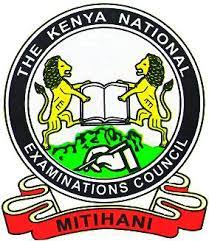
Chemistry Paper 3 (233/3)
1 You are provided with:
– solution J containing copper (ll) ions.
solution K, 0.1 M sodium thiosulphate.
aqueous potassium iodide, solution L.
solution N, sodium hydroxide.
starch indicator, solution M.
You are required to determine the:
– concentration of copper (ll) ions in solution J;
– enthalpy change of reaction between copper (ll) ions and hydroxide ions.
PROCEDURE 1
(a) Using a pipette and pipette filler, place 25.0 cm-‘ of solution J in a 250 ml volumetric flask. Add distilled water to make up to the mark. Label this as solution J2. Retain solution J for use in procedure II.
Place solution K in a burette. Using a clean pipette and pipette filler, place 25.0 cm3 of solution J2 in a 250 ml conical flask. Add 10 cm3 of potassium iodide, solution L.
Shake well, then add 2 cm3 of starch indicator, solution M. Titrate until a blue-black colour appears and continue titrating until the blue-black colour just disappears.
Record your readings in Table 1 below.
(c) Repeat step (b) two more times and complete Table 1.

(i) average volume of solution K used; (1 mark)
(ii) moles of sodium thiosulphate used; (2 marks)
(iii) concentration in moles per litre of copper (ll) ions in solution J given that the number of moles of copper (ll) ions in 25.0 cm} of solution J2 are the same as the moles of sodium thiosulphate used. (2 marks)
PROCEDURE 11
(a) Using a clean burette, place 5.0 cm3 of solution N into each of six (6) test-tubes. (b) Using a 100 ml measuring cylinder, place 20 cm3 of solution J in a 100 ml plastic beaker. Measure the temperature of solution J and record it in Table 2 below.
(c) To solution J in the beaker, add sodium hydroxide, solution N from one of the test-tubes. Stir the mixture with the thermometer and record in Table 2, the maximum temperature reached. Continue with step (d) IMMEDIATELY.
(d)Add the sodium hydroxide, solution N from another test-tube to the mixture obtained in (c) above, stir and record the maximum temperature reached in Table 2. Continue adding the sodium hydroxide, solution N from each of the other four test-tubes, stirring the mixture and recording the maximum temperature each time and complete Table 2.

(ii) Using the graph, determine the:
I volume of sodium hydroxide, solution N that reacted completely with 20 cm3 of solution J; (2 marks)
II temperature change, AT, for the reaction; (1 mark)
(iii) enthalpy change of the reaction per mole of copper (ll)ions. (3 marks)
(Heat capacity I 4.2 J g”k”, density of the mixture I 1.0 g cm’3). 2 You are provided With substance P. Can”y out the tests below and Write your observations and inferences in the spaces provided.
(a) Describe the appearance of substance P. (1 mark)
(b) Place about one-third of substance P in a dry test-tube and heat it strongly.


(d) Use about 2 cml portions of the mixture obtained in (c) for tests (i) to (iii) below.
(i) Add two to three drops of aqueous barium nitrate to the mixture.

(ii) Add five drop of dilute nitric(V) acid to the mixture

(iii)Add to the mixture aqueous sodium hydroxide dropwise until in excess

(e) Give the formula of the cation and anion present in substance P
Cation: ………… ..
Anion: ………(1 mark)
3 You are provided with an organic substance Q. Carry out the following tests and record your observations and inferences in the spaces provided.
(a) Place about one-third of substance Q on a metallic spatula and ignite it with a Bunsen burner flame.

(i) To the first portion, add solid sodium hydrogen carbonate provided.

(ii) To the second portion, add two or three drops of acidified potassium manganate

